Biochar to be considered as an official climate change mitigation and adaptation strategy
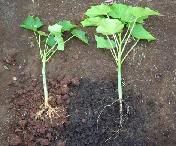 The International Biochar Initiative (IBI) announces that the United Nations Convention to Combat Desertification (UNCCD) has submitted a proposal to include biochar as a mitigation and adaptation technology to be considered in the post-2012-Copenhagen agenda of the UN Framework Convention on Climate Change (UNFCCC). The UNCCD proposal highlights the many benefits of biochar: the fact that it can be measured easily, the role it can play in sequestering carbon in dryland soils and its potential as a strategy to prevent deforestation.
The International Biochar Initiative (IBI) announces that the United Nations Convention to Combat Desertification (UNCCD) has submitted a proposal to include biochar as a mitigation and adaptation technology to be considered in the post-2012-Copenhagen agenda of the UN Framework Convention on Climate Change (UNFCCC). The UNCCD proposal highlights the many benefits of biochar: the fact that it can be measured easily, the role it can play in sequestering carbon in dryland soils and its potential as a strategy to prevent deforestation.Biochar is a fine-grained, highly porous charcoal that helps soils retain nutrients and water. The carbon in biochar resists degradation and can sequester carbon in soils for hundreds to thousands of years.
IBI Executive Director Debbie Reed said, "The UNCCD submission is a great success, and is paralleled by a lot of very positive discussions and interest in biochar amongst country delegates as well as observers of the process."
The UNCCD, a sister convention to the UNFCCC, has identified biochar as a unique opportunity to address soils as a carbon sink. According to the submission document:
The world's soils hold more organic carbon than that held by the atmosphere as CO2 and vegetation, yet the role of the soil in capturing and storing carbon dioxide is often one missing information layer in taking into consideration the importance of the land in mitigating climate change.UNCCD proposes that biochar must be considered as a vital tool for rehabilitation of dryland soils: "The fact that many of the drylands soils have been degraded means that they are currently far from saturated with carbon and their potential to sequester carbon may be very high ... making the consideration of biochar, as a strategy for enhancing soils carbon sequestration, imperative."
UNCCD also cites the ability of biochar to address multiple climate and development concerns while avoiding the disadvantages of other bioenergy technologies that deplete soil organic matter (SOM).
Pyrolysis systems that produce biochar can provide many advantages. Biochar restores soil organic carbon and soil fertility, reduces emissions from agriculture, and can provide clean, renewable energy. Conventional biomass energy competes with soil building needs for crop residue feedstocks, but biochar accommodates both uses. - Debbie Reed, IBI Executive DirectorReduced deforestation is another biochar advantage cited by the UNCCD in their submitted proposal for including biochar in carbon trading mechanisms:
The carbon trade could provide an incentive to cease further deforestation; instead reforestation and recuperation of degraded land for fuel and food crops would gain magnitude.UNCCD proposes to include biochar in the Clean Development Mechanism (CDM), and to revise the rules to account for biochar as a permanent means of carbon capture. UNCCD also proposes adjusting the carbon offset rules to allow greater financial flows to help developing countries increase soil organic matter with biochar.
Biochar has one important additional advantage over other land use carbon sequestration projects - carbon sequestration through biochar is easy to quantify. It is also relatively permanent.
The UNCCD says:
Potential drawbacks such as difficulty in estimating greenhouse gas removals and emissions resulting from land use, land use change and forestry (LULUCF), or destruction of sinks through forest fire or disease do not apply to biochar soil amendments.Overall, the potential magnitude of biochar as a climate mitigation tool is great:
 energy :: sustainability :: biomass :: bioenergy :: land-use :: deforestation :: soils :: biochar :: climate change :: UNCCD :: CDM ::
energy :: sustainability :: biomass :: bioenergy :: land-use :: deforestation :: soils :: biochar :: climate change :: UNCCD :: CDM :: IBI Board Chair Dr. Johannes Lehmann said, "We are pleased that the UNCCD has recognized the potential of biochar. Results from IBI's preliminary model to estimate the potential of biochar carbon sequestration show that biochar production from agriculture and forestry residues can potentially sequester one gigaton of carbon in the world's soils annually by 2040. Using the biochar energy co-product to displace fossil fuel energy can approximately double the carbon impact of biochar alone."
IBI's objective for the remainder of the UN meeting at Poznan is to interest more countries in proposing biochar for consideration as a mitigation and adaptation technology in the post-2012 Copenhagen process of the UNFCCC.
The International Biochar Initiative (IBI) is a registered non-profit organization that serves as an international platform for the exchange of information and activities in support of biochar research, development, demonstration and commercialization. IBI participants comprise a consortium of researchers, commercial entities, policy makers, development agents, farmers and gardeners and others committed to supporting sustainable biochar production and utilization systems that remove carbon from the atmosphere and enhance the earth's soils.
Many small scale initiatives are being launched to get biochar taken up by poor farmers in developing countries so that soils not only become carbon sinks, but yield more food and biomass. The activities of the Biochar Fund offer an interesting example. Its model is aimed at making biochar the kernel of a highly integrated development concept that succeeds in tackling food insecurity and low agricultural productivity amongst subistence farmers, deforestation, energy poverty and climate change - simultaneously.
Picture: seedlings illustrating the difference between plants grown in biochar-amended soil (darker soil on the right). Credit: Robert Flanagan.
Article continues
 --------------
--------------
 The December 2008 issue of Tropical Conservation Science is now online. The issue features a special section on the conservation of Neotropical reptiles and amphibians as well as articles on the ecological impact of rural depopulation, conservation of manatees in southern Mexico, and co-management approaches to conservation in Tanzania. The next issue of Mongabay.com's open-access scientific journal will be published in March 2009.
The December 2008 issue of Tropical Conservation Science is now online. The issue features a special section on the conservation of Neotropical reptiles and amphibians as well as articles on the ecological impact of rural depopulation, conservation of manatees in southern Mexico, and co-management approaches to conservation in Tanzania. The next issue of Mongabay.com's open-access scientific journal will be published in March 2009.

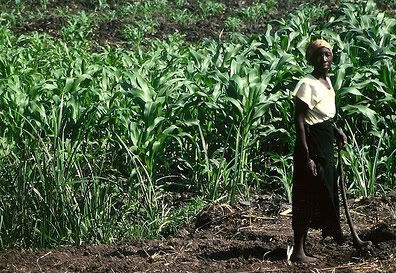
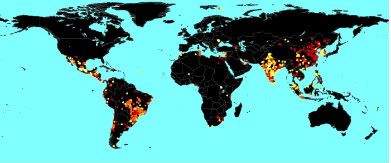
 Another 40 million people have been pushed into hunger this year primarily due to higher food prices, according to preliminary estimates published by FAO today. This brings the overall number of undernourished people in the world to 963 million, compared to 923 million in 2007 and the ongoing financial and economic crisis could tip even more people into hunger and poverty, FAO warned.
Another 40 million people have been pushed into hunger this year primarily due to higher food prices, according to preliminary estimates published by FAO today. This brings the overall number of undernourished people in the world to 963 million, compared to 923 million in 2007 and the ongoing financial and economic crisis could tip even more people into hunger and poverty, FAO warned.
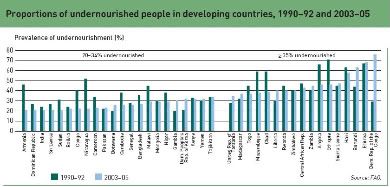
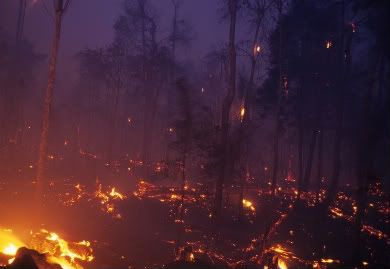
 The U.S. Department of Energy Joint Genome Institute (DOE JGI) has
The U.S. Department of Energy Joint Genome Institute (DOE JGI) has 






Thursday, December 11, 2008
From bioenergy to smart conservation
The small group of dedicated people who wrote for Biopact have learned a lot during these past few years. We learned, for example, that large-scale biofuel production may do a lot of harm, while small-scale, locally rooted bioenergy initiatives may change lives for the better. We gained an insight into new farming techniques, like biochar, which may help tackle key problems in the developing world. We changed perspectives when it became clear that the interrelated threats of climate change and energy insecurity require far more action on the part of individuals, communities and governments. And above all, we came to think that the few patches of untouched nature we have left on this planet, need to be conserved.
This is why we are pleased to refer our readers from now on to Mongabay - one of the most insightful resources on tropical conservation. Besides offering an overview of the latest in conservation science, Mongabay also tracks developments in the bioenergy sector, in climate change, and in the emerging markets for ecosystem services. It is one of the few resources which tries to go beyond classic contradictions and oppositions between conservation and development. Instead, Mongabay continuously explores ways to bridge this gap.
Meanwhile, the Biopact editors, writers and enthusiasts – who all worked as volunteers – move on to do other things. Some of us remain active in the bioenergy sector, while others plan to undertake entirely new adventures. We want to thank our readers for their loyalty, and hope they have gained as many insights into the topics we covered, as we have.
The Biopact team------The Mongabay team
Article continues
posted by Biopact team at 5:00 PM 5 comments links to this post
